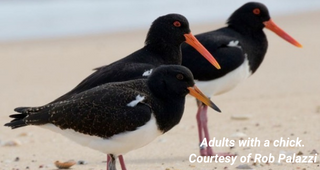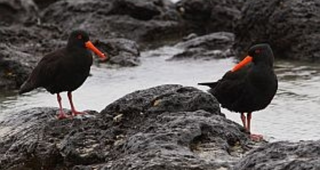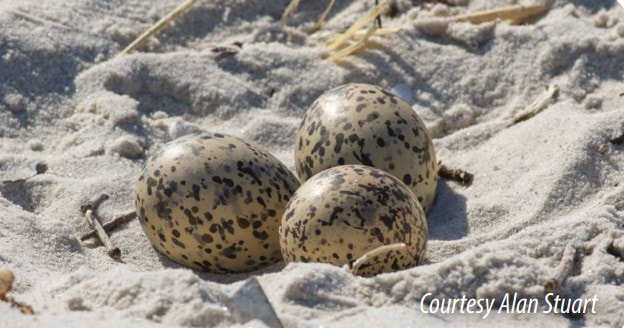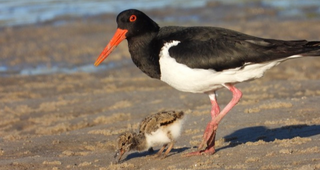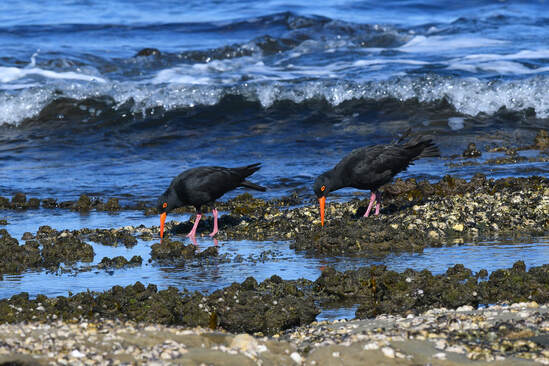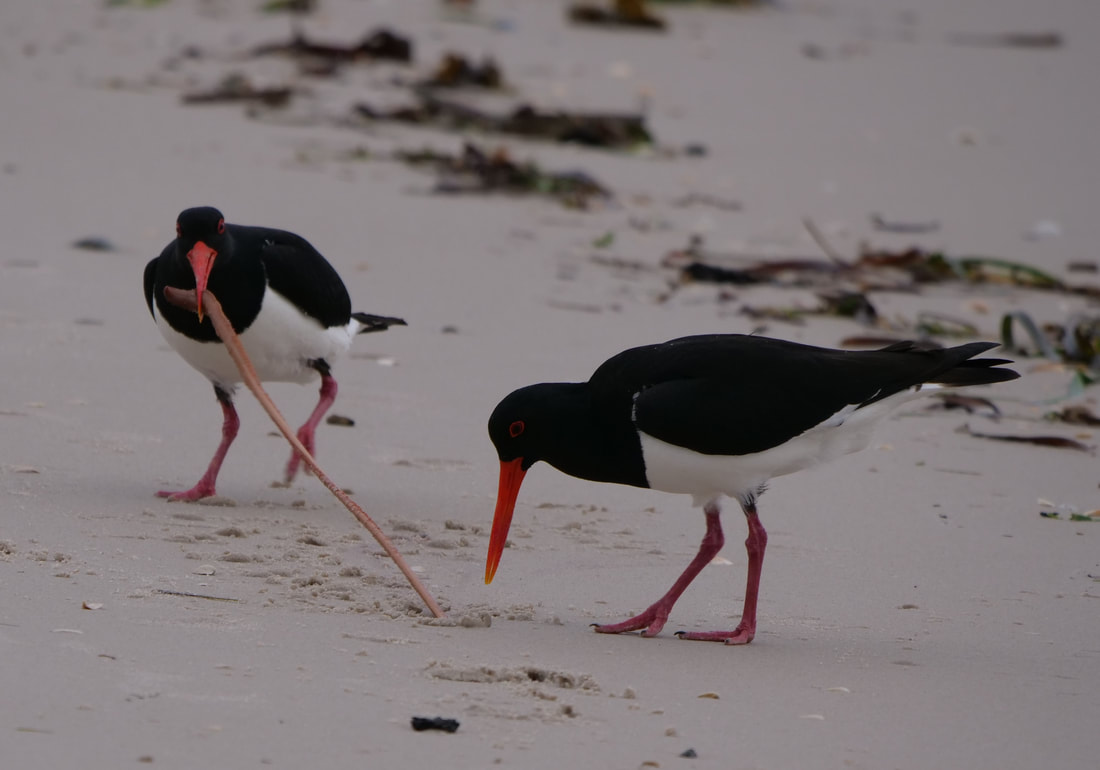Pied Oystercatcher
There are two types of Oystercatchers that are
frequently spotted on the Myall Coast:
The Sooty Oystercatcher (Haematopus fuliginosus); and
the Pied Oystercatcher (Haematopus longirostris).
With its striking black-and-white plumage, vivid red bill and evocative piping call, the Australian Pied Oystercatcher inhabits sandy beaches, sandspits and mudflats.
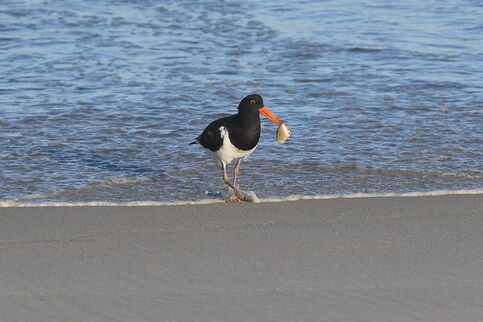 Photo by Sharon Taylor
Photo by Sharon Taylor
Oystercatchers are typically seen probing the sand or mud with their long bills in search of sandworms, molluscs or crabs, sometimes hammering at their shells.
Or they may be seen roosting at high tide, sometimes with other species, such as gulls, cormorants, waterfowl, Sooty Oystercatchers or other waders.
Pied Oystercatchers breed in pairs. A breeding territory of some 200m is formed and is defended by both birds. Nesting takes place on sand, shell grit or shingle just above high-water mark on beaches, sandbars, margins of estuaries and lagoons.
The eggs are well-camouflaged, being pale brown with darker brown and black blotches and streaks. Both sexes share parenting duties. In recent years, Corrie Island has been a favoured nesting site.
They are a non-migratory bird and spend their whole life in the one location.
They are frequently seen in pairs at low tide foraging for food in the wet sand on the sand-spits at the western end of Winda Woppa and the Boulders as well as on Bennetts Beach, Hawks Nest.
The Pied Oystercatcher is classified as Endangered in NSW. It is believed that up to two thirds of the entire state population resides in Port Stephens.
By Ian Morphett October 2021
Information from Birdlife Australia and the Hunter Bird Observers Club.
Or they may be seen roosting at high tide, sometimes with other species, such as gulls, cormorants, waterfowl, Sooty Oystercatchers or other waders.
Pied Oystercatchers breed in pairs. A breeding territory of some 200m is formed and is defended by both birds. Nesting takes place on sand, shell grit or shingle just above high-water mark on beaches, sandbars, margins of estuaries and lagoons.
The eggs are well-camouflaged, being pale brown with darker brown and black blotches and streaks. Both sexes share parenting duties. In recent years, Corrie Island has been a favoured nesting site.
They are a non-migratory bird and spend their whole life in the one location.
They are frequently seen in pairs at low tide foraging for food in the wet sand on the sand-spits at the western end of Winda Woppa and the Boulders as well as on Bennetts Beach, Hawks Nest.
The Pied Oystercatcher is classified as Endangered in NSW. It is believed that up to two thirds of the entire state population resides in Port Stephens.
By Ian Morphett October 2021
Information from Birdlife Australia and the Hunter Bird Observers Club.
